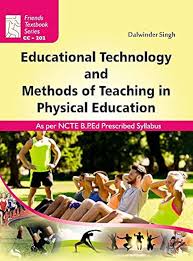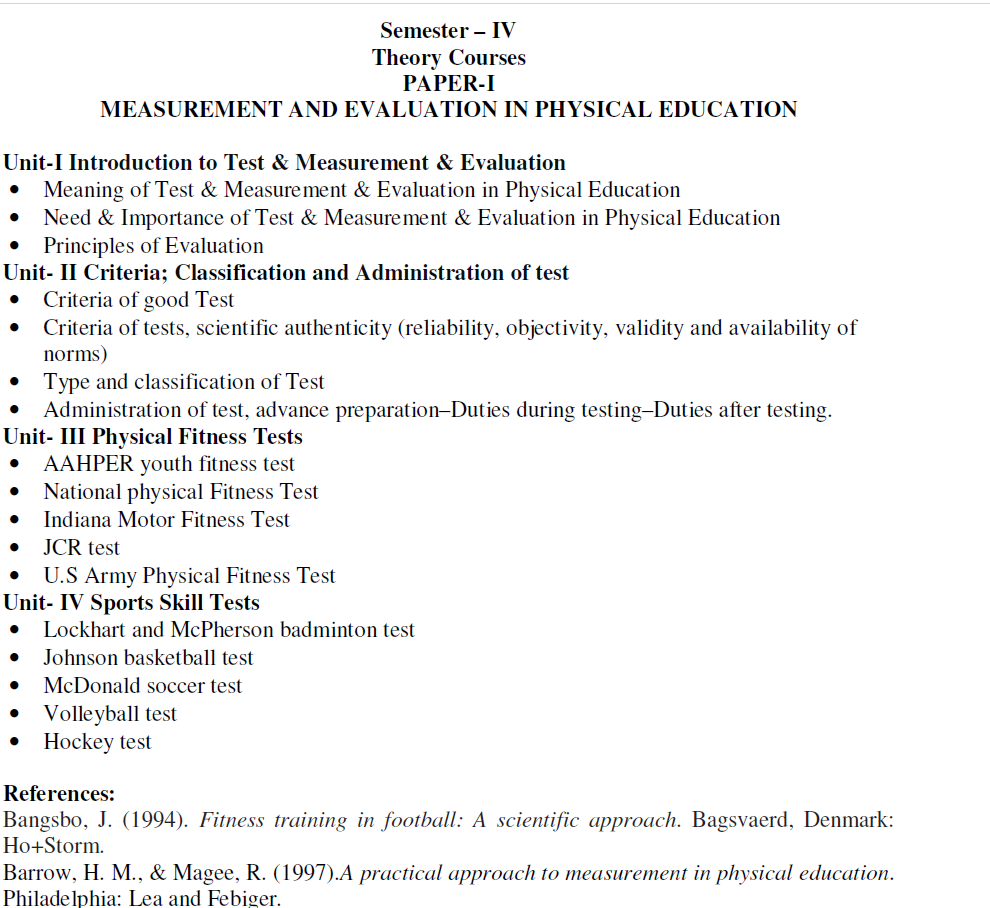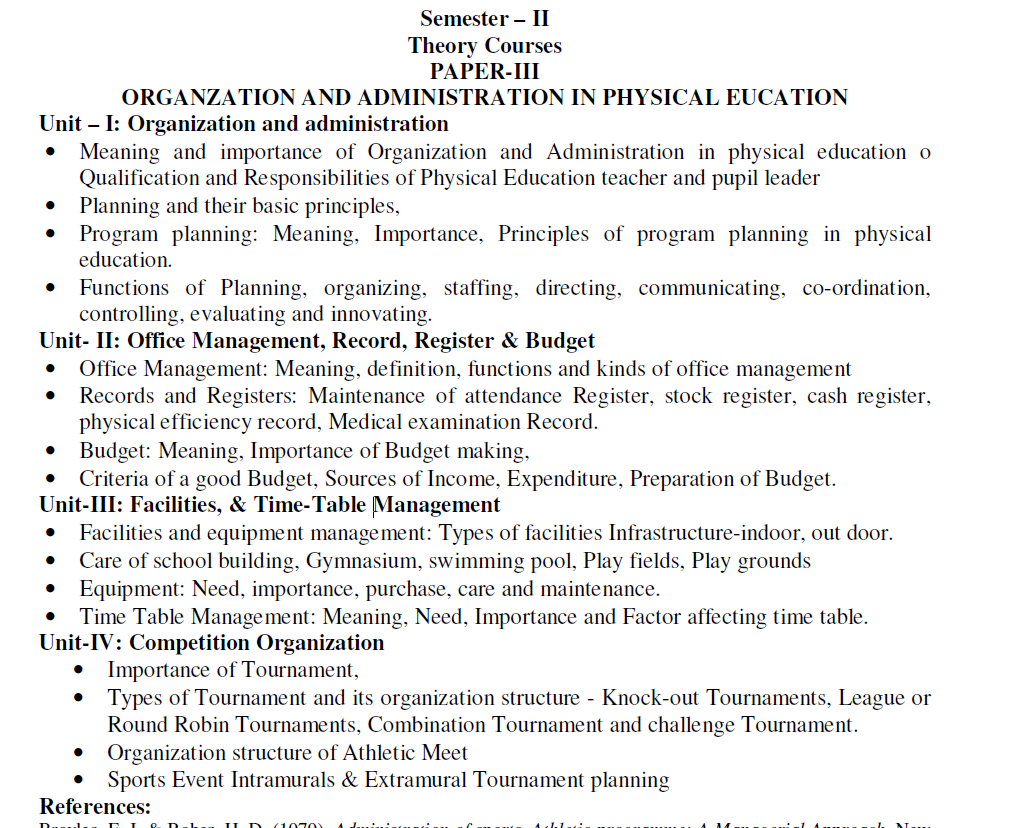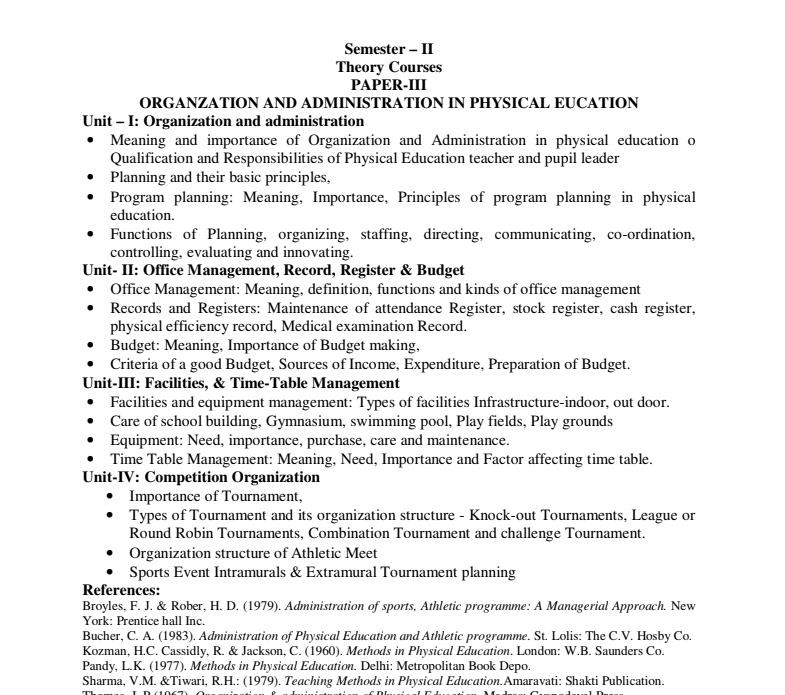
The Course learning outcomes (COs): On completion of the two years B.P.Ed., program, the students will be learning and able to do/perform the following…….
CO-1. Remembering the concepts of educational technology and methods of teaching in physical education
CO-2.Understanding the various teaching techniques that used in the field of physical education and sports.
CO-3. Understanding the various teaching aids.
CO-4.Applying knowledge of teaching techniques in preparing general and specific lessons.
CO-5. Analysing and evaluating various teaching aids and techniques.
- Teacher: Ashish Katiyar
RESEARCH AND STATISTICS IN PHYSICAL EDUCATION
Unit-I Introduction to Research
• Definition of Research
• Need and importance of Research in Physical Education and Sports.
• Scope of Research in Physical Education & Sports.
• Classification of Research
• Research Problem, Meaning of the term, Location and criteria of Selection of Problem,
Formulation of a Research Problem, Limitations and Delimitations.
Unit-II Survey of Related Literature
• Need for surveying related literature.
• Literature Sources, Library Reading
• Research Proposal, Meaning and Significance of Research Proposal.
• Preparation of Research proposal / project.
• Research Report: A group project is to be undertaken by a small batch of students under the
supervision of a teacher, wherein it is expected to survey school facilities of physical
education, health assessment programme evaluation, fitness status of the students, staff and
other stakeholders etc. and submit the report to the institution.
Unit-III Basics of Statistical Analysis
• Statistics: Meaning, Definition, Nature and Importance
• Class Intervals: Raw Score, Continuous and Discrete Series, Class Distribution,
Construction of Tables
• Graphical Presentation of Class Distribution: Histogram, Frequency Polygon, Frequency
Curve. Cumulative Frequency Polygon, Ogive, Pie Diagram
Unit- IVStatistical Models in Physical Education and Sports
• Measures of Central Tendency: Mean, Median and Mode-Meaning, Definition,
• Importance, Advantages, Disadvantages and Calculation from Group and Ungrouped data
• Measures of Variability: Meaning, importance, computing from group and ungroup data
• Percentiles and Quartiles: Meaning, importance, computing from group and ungroup data
References:
Clark, H. H., & Clark, D. H. (1975).Research process in physical education. Englewood cliffs, New Jersey: Prentice
Hall, Inc.
Garrett, H.E. (1981). Statistics in psychology and education. New York: VakilsFeffer and Simon Ltd.
Oyster, C. K., Hanten, W. P., &L. Lorens, L. A. (1987)Introduction to research: A guide for thehealth science
professional. Landon: J.B. Lippincott Company.
Thomas, J.R., & Nelson J.K. (2005).Research method in physical activity. U.S.A: Champaign, IL: Human Kinetics
Books.
Thomas, J.R., Nelson, J.K. & Silverman, S.J. (2011). Research method in physical activity. U.S.A: Champaign, IL:
Human Kinetics Books.
Verma, J. P. (2000). A text book on sports statistics. Gwalior: Venus Publications.
- Teacher: Saravan Kumar Singh Yadav

MEASUREMENT AND EVALUATION IN PHYSICAL EDUCATION
Unit-I Introduction to Test & Measurement & Evaluation
• Meaning of Test & Measurement & Evaluation in Physical Education
• Need & Importance of Test & Measurement & Evaluation in Physical Education
• Principles of Evaluation
Unit- II Criteria; Classification and Administration of test
• Criteria of good Test
• Criteria of tests, scientific authenticity (reliability, objectivity, validity and availability of
norms)
• Type and classification of Test
• Administration of test, advance preparation–Duties during testing–Duties after testing.
Unit- III Physical Fitness Tests
• AAHPER youth fitness test
• National physical Fitness Test
• Indiana Motor Fitness Test
• JCR test
• U.S Army Physical Fitness Test
Unit- IV Sports Skill Tests
• Lockhart and McPherson badminton test
• Johnson basketball test
• McDonald soccer test
• Volleyball test
• Hockey test
References:
- Teacher: Saurabh Tiwari

ORGANZATION AND ADMINISTRATION IN PHYSICAL EUCATION
Unit – I: Organization and administration
• Meaning and importance of Organization and Administration in physical education o
Qualification and Responsibilities of Physical Education teacher and pupil leader
• Planning and their basic principles,
• Program planning: Meaning, Importance, Principles of program planning in physical
education.
• Functions of Planning, organizing, staffing, directing, communicating, co-ordination,
controlling, evaluating and innovating.
Unit- II: Office Management, Record, Register & Budget
• Office Management: Meaning, definition, functions and kinds of office management
• Records and Registers: Maintenance of attendance Register, stock register, cash register,
physical efficiency record, Medical examination Record.
• Budget: Meaning, Importance of Budget making,
• Criteria of a good Budget, Sources of Income, Expenditure, Preparation of Budget.
Unit-III: Facilities, & Time-Table Management
• Facilities and equipment management: Types of facilities Infrastructure-indoor, out door.
• Care of school building, Gymnasium, swimming pool, Play fields, Play grounds
• Equipment: Need, importance, purchase, care and maintenance.
• Time Table Management: Meaning, Need, Importance and Factor affecting time table.
Unit-IV: Competition Organization
• Importance of Tournament,
• Types of Tournament and its organization structure - Knock-out Tournaments, League or
Round Robin Tournaments, Combination Tournament and challenge Tournament.
• Organization structure of Athletic Meet
• Sports Event Intramurals & Extramural Tournament planning
- Teacher: Saurabh Tiwari
Unit-I
• Nature and Concept of Sports Management.
• Progressive concept of Sports management.
• The purpose and scope of Sports Management.
• Essential skills of Sports Management.
• Qualities and competencies required for the Sports Manager.
• Event Management in physical education and sports.
Unit-II
• Meaning and Definition of leadership
• Leadership style and method.
• Elements of leadership.
• Forms of Leadership.
• Autocratic
• Laissez-faire
• Democratic
• Benevolent Dictator
• Qualities of administrative leader.
• Preparation of administrative leader.
• Leadership and Organizational performance.
Unit-III
• Sports Management in Schools, colleges and Universities.
• Factors affecting planning
• Planning a school or college sports programme.
• Directing of school or college sports programme.
• Controlling a school, college and university sports programme.
• Developing performance standard
• Establishing a reporting system
• Evaluation
• The reward/punishment system
Unit-IV
• Financial Management in Physical Education & sports in schools, Colleges and
• Universities.
• Budget–Importance, Criteria of good budget,
• Steps of Budget making
• Principles of budgeting
REFERENCES:
Ashton, D. (1968).Administration of physical education for women.New York: The Ronal Press Cl.
Bucher, C.A. Administration of physical education and athletic programme. 7th Edition, St. Louis: The C.V. Mosby Co.
Daughtrey, G. & Woods, J.B. (1976).Physical education and intramural programmes, organization and
administration.Philadelphia U.S.A: W.B. Sounders Cp.
Earl, F. Z,& Gary, W. B. (1963).Management competency development in sports and physical education. Philadelphia: W. Lea
and Febiger.
- Teacher: Nimisha Singh Kushwaha

ORGANZATION AND ADMINISTRATION IN PHYSICAL EUCATION
Unit – I: Organization and administration
• Meaning and importance of Organization and Administration in physical education o
Qualification and Responsibilities of Physical Education teacher and pupil leader
• Planning and their basic principles,
• Program planning: Meaning, Importance, Principles of program planning in physical
education.
• Functions of Planning, organizing, staffing, directing, communicating, co-ordination,
controlling, evaluating and innovating.
Unit- II: Office Management, Record, Register & Budget
• Office Management: Meaning, definition, functions and kinds of office management
• Records and Registers: Maintenance of attendance Register, stock register, cash register,
physical efficiency record, Medical examination Record.
• Budget: Meaning, Importance of Budget making,
• Criteria of a good Budget, Sources of Income, Expenditure, Preparation of Budget.
Unit-III: Facilities, & Time-Table Management
• Facilities and equipment management: Types of facilities Infrastructure-indoor, out door.
• Care of school building, Gymnasium, swimming pool, Play fields, Play grounds
• Equipment: Need, importance, purchase, care and maintenance.
• Time Table Management: Meaning, Need, Importance and Factor affecting time table.
Unit-IV: Competition Organization
• Importance of Tournament,
• Types of Tournament and its organization structure - Knock-out Tournaments, League or
Round Robin Tournaments, Combination Tournament and challenge Tournament.
• Organization structure of Athletic Meet
• Sports Event Intramurals & Extramural Tournament planning
- Teacher: Saurabh Tiwari